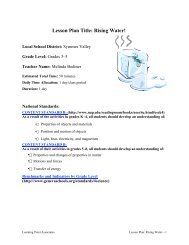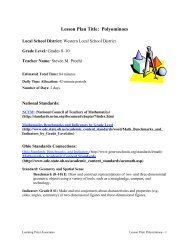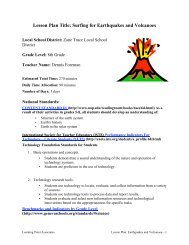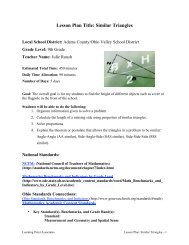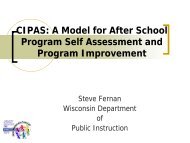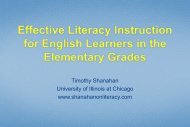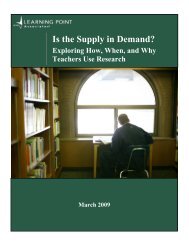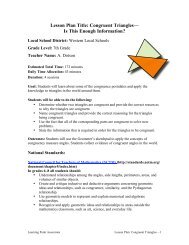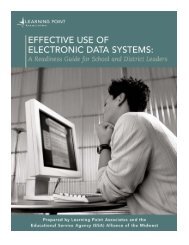A Closer Look at the Five Essential Components - Learning Point ...
A Closer Look at the Five Essential Components - Learning Point ...
A Closer Look at the Five Essential Components - Learning Point ...
Create successful ePaper yourself
Turn your PDF publications into a flip-book with our unique Google optimized e-Paper software.
Conclusion<br />
Teaching children to read is a challenging responsibility. Fulfilling this responsibility requires<br />
knowledge of effective instructional practices and a willingness to use <strong>the</strong>m. Teachers who have<br />
a thorough understanding of <strong>the</strong> five essential components of effective reading instruction are<br />
equipped to teach children to read using instructional str<strong>at</strong>egies and m<strong>at</strong>erials th<strong>at</strong> have proven<br />
to be effective.<br />
The five essential components of effective reading instruction represent ingredients th<strong>at</strong> must<br />
be present in order for children to learn to read. Effective teachers know how to blend <strong>the</strong>se<br />
ingredients in <strong>the</strong> right proportions to meet <strong>the</strong> unique needs of each child. They understand<br />
<strong>the</strong> roles of phonemic awareness and phonics in building word-recognition skills, and <strong>the</strong>y know<br />
how to identify and correct students’ weaknesses in <strong>the</strong>se areas. They also know th<strong>at</strong> <strong>the</strong>se two<br />
found<strong>at</strong>ional components will receive less emphasis as students gain competence as readers.<br />
Effective teachers know how fluency facilit<strong>at</strong>es comprehension, and <strong>the</strong>y know how to use<br />
research-based str<strong>at</strong>egies for helping students become fluent readers. These teachers are<br />
continually building each student’s vocabulary and <strong>the</strong> ability to learn <strong>the</strong> meanings of new<br />
words through a variety of word-learning str<strong>at</strong>egies. Finally, <strong>the</strong>y know th<strong>at</strong> comprehension is<br />
<strong>the</strong> ultim<strong>at</strong>e goal of reading instruction, and <strong>the</strong>y are adept <strong>at</strong> helping students learn to apply<br />
appropri<strong>at</strong>e comprehension str<strong>at</strong>egies as <strong>the</strong>y read.<br />
Those who accept <strong>the</strong> responsibility for teaching children to read understand th<strong>at</strong> it includes a<br />
commitment to continually search for more effective ways to help children gain competence in<br />
this very important skill. This paper is intended to provide teachers with a clear description of<br />
<strong>the</strong>se components, how <strong>the</strong>y influence reading and reading achievement, and how <strong>the</strong>y can be<br />
taught effectively. An in-depth understanding of <strong>the</strong>se components will enable teachers to plan<br />
an effective program of reading instruction, diagnose reading difficulties and provide<br />
instruction th<strong>at</strong> targets those difficulties effectively, evalu<strong>at</strong>e reading m<strong>at</strong>erials and instructional<br />
practices, and help o<strong>the</strong>rs become more effective teachers of reading.<br />
Effective Reading Instruction? 39




